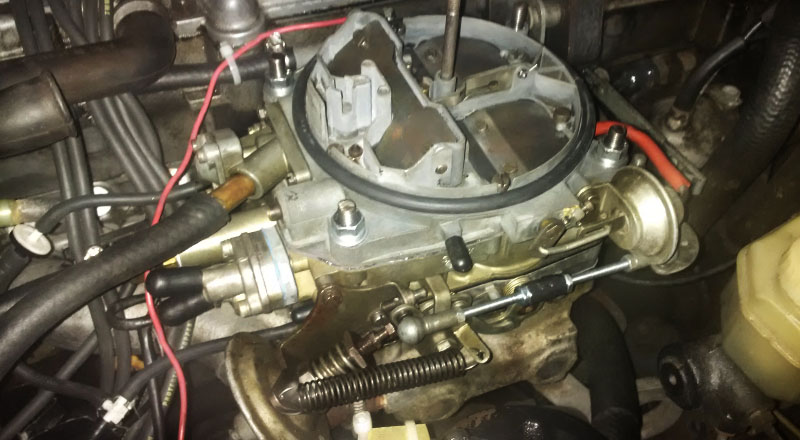 |
| Home |
Any carburetor - how to set-up choke
When engine sat overnight, it's naturally cold. When air/fuel mixture is sucked through the intake manifold on start-up, significant portion of the mixture condensates on the walls rather then being pulled into the cylinders. As the engine warms up, metal expands. On cold engine, before the metal has expanded, there are "gaps" between cylinder walls and the pistons thus the vacuum on cold start-up is much lower then when the engine warms up and the tolerances get tighter. So cold engine has two factors going against it - cold walls condensate much of the air/fuel mixture making it less susceptible to combustion AND the lesser vacuum pulls less of that air/fuel mixture into the engine due to lesser tolerances. This is why on cold engines we need richer mixture and to get that richer mixture on carbureted engines we need a choke. On cold engine you press the gas pedal BEFORE turning the key. When you let go of the pedal, the carb's choke is set. A few things happen at the time: the choke flaps close COMPLETELY and the fast idle screw rests against the cam that holds the throttle plates more open then at normal idle. When you turn the engine on, the vacuum generated by the engine pulls the choke plates open SLIGHTLY (1-4mm depending on the engine and carburetor). The engine is choked preventing too much air getting into the engine AND keeping the vacuum under the choke plates high thus pulling in way more gasoline than at normal idle. The mixture is very rich at this stage. As the engine warms up, the spring in the choke housing warms up too gradually opening up the choke plate (thus decreasing the vacuum = less fuel is pulled in AND letting in more air into the engine). As the engine warms up and the choke opens, the mixture gets progressively leaner but at the same time the RPM increases as the increased engine temperature lets the leaner mixtures atomize better. If you were to note your RPM on cold start up and then without touching the engine let the engine warm up, the RPM would increase drastically. If you were to tap the gas at any time the RPM would drop as the choke's spring that held the throttle plates open via the fast idle cam would let go and the fast idle cam would disengage closing the throttle plates. At the same time if the choke spring is still on on the coldish side, the fast idle would still stay relatively high. This is to prevent idle RPM drooping too low when coming to a stop after a short drive (when engine is still coldish). If after a short drive your RPM drops too low at idle, this means that the car's choke has opened up fully even though the engine is still not operating at its optimal temperature and the fast idle cam got disengaged closing the throttle plates to regular idle position. This means you should let the choke on for a bit longer by turning it to its RICHER setting or just don't slam on the gas untill the car is still cold so the fast idle cam stays engaged. |
| copyright 2019 by Patryk Rebisz |
